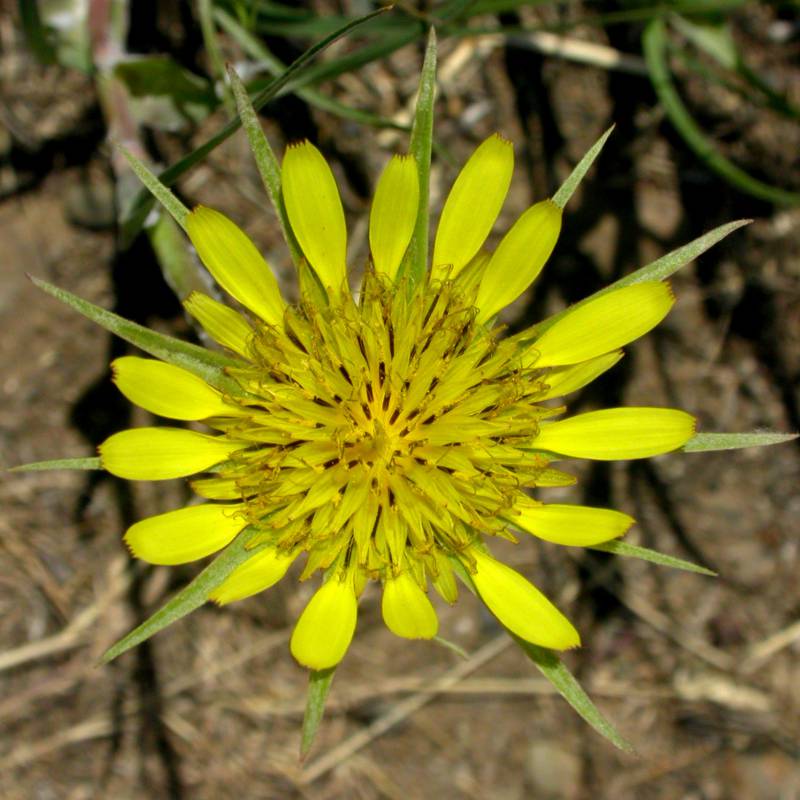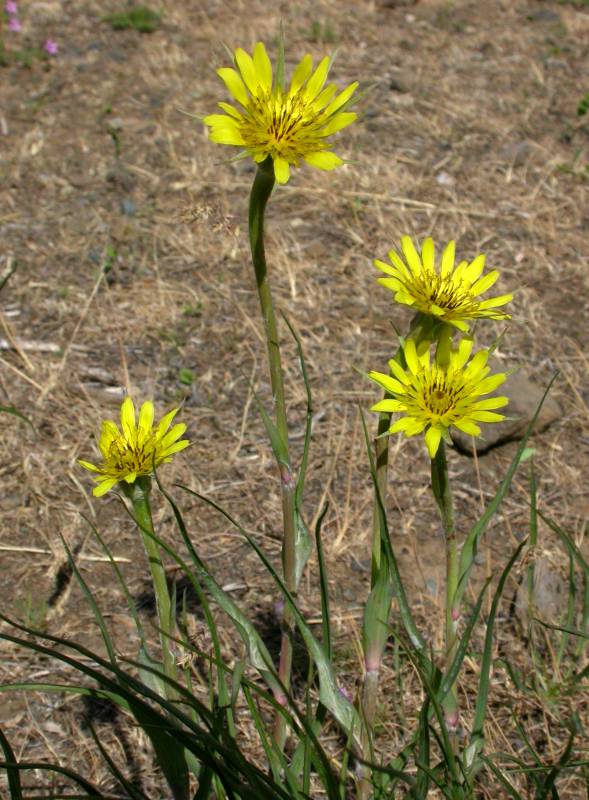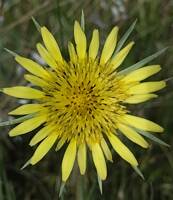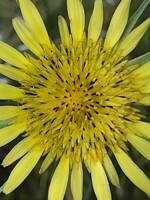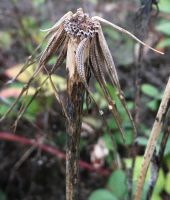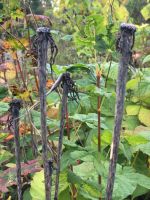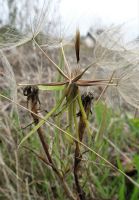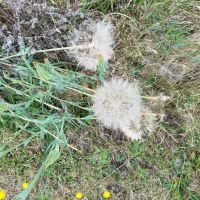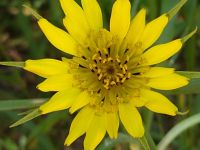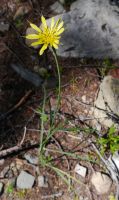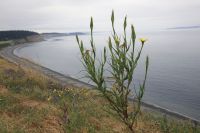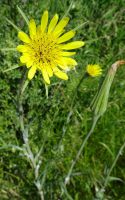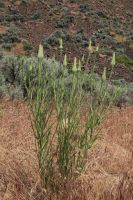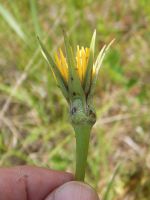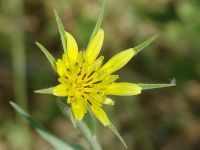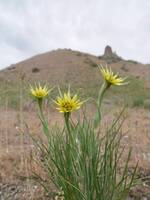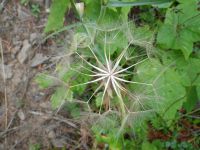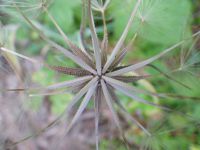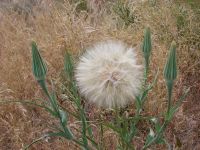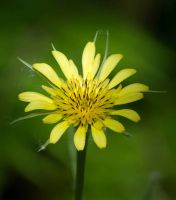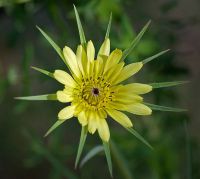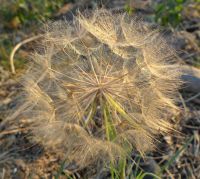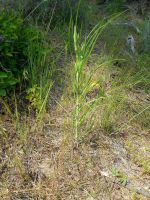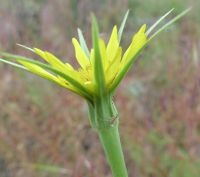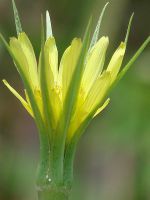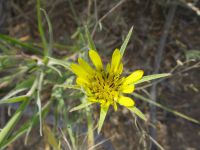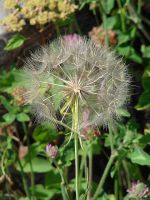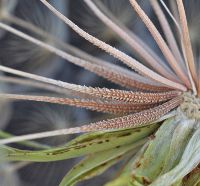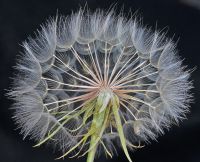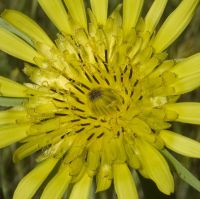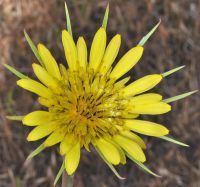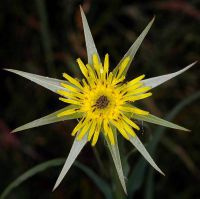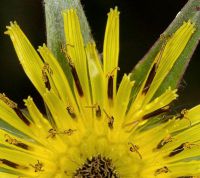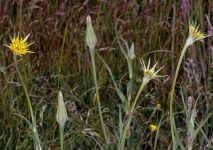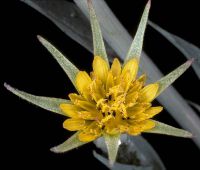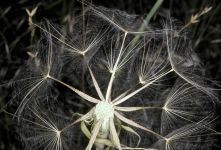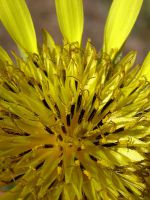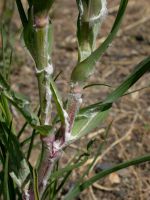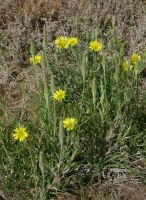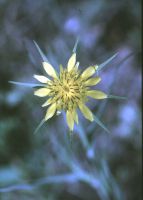Distribution: Occurring chiefly east of the Cascades crest in Washington; Alaska to California, east across most of North America to the Atlantic Coast.
Habitat: Roadsides, fields, meadows, wastelots, overgrazed areas, and other disturbed open areas at low to middle elevations.
Flowers: May-September
Origin: Introduced from Europe
Growth Duration: Annual, Biennial
Conservation Status: Not of concern
Pollination: Bees, flies
Biennial from a fleshy taproot, or occasionally annual, the stem usually branched, 3-10 dm. tall, the juice milky.
Leaves elongate, uniformly tapering from base to apex, entire, not recurved, mostly glabrous but with some loose, wooly hairs in the axils.
Heads solitary at the ends of branches, the peduncles enlarged and hollow under the heads; involucral bracts in a single series, equal, about 13, 2.5-4 cm. long in flower, distinctly surpassing the pale, lemon-yellow, ligulate corollas, elongating to 4-7 cm. in fruit; pappus of a single series of whitish, uneven-length, plumose bristles, the plume branches interwebbed.
Achenes slender, 25-36 mm. long, gradually narrowed to the stout beak.
Publication: Fl. Carniol. ed. 2. 2: 95. 1772.
PNW Herbaria: Specimen records of Tragopogon dubius in the Consortium of Pacific Northwest Herbaria database.
WA Flora Checklist: Tragopogon dubius checklist entry.
OregonFlora: Tragopogon dubius information.
E-Flora BC: Tragopogon dubius atlas page.
CalPhotos: Tragopogon dubius photos.
USDA Plants: Tragopogon dubius information.

